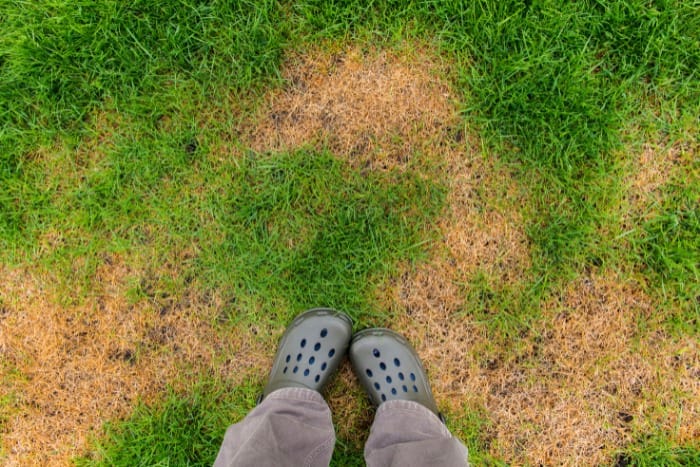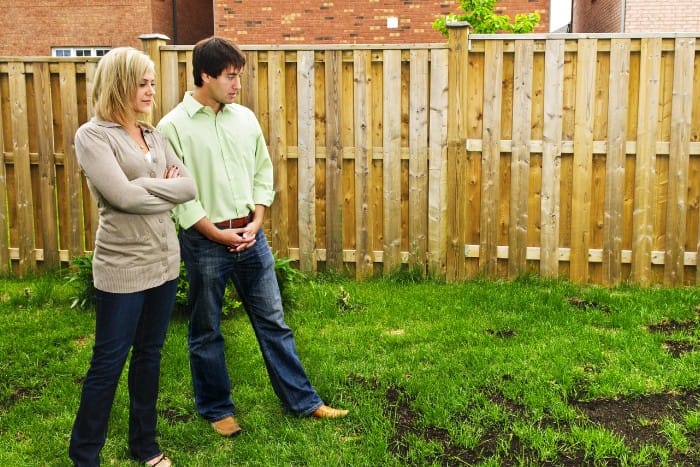A lush, vibrant lawn not only enhances your home’s curb appeal but also provides a space for relaxation and recreation. However, maintaining such a lawn requires vigilance against common diseases that may undermine its health and aesthetics. This guide delves into several prevalent lawn diseases, their signs, and effective, environmentally friendly treatments.
Understanding Lawn Diseases
Lawn diseases are primarily fungal problems that thrive under specific environmental conditions such as moisture, temperature, and lawn health. Knowing the signs and taking timely action can prevent these diseases from taking hold.
Identifying Common Lawn Diseases

- Brown Patch: Common in warm, humid climates, this disease presents as circular patches of brown, dying grass. It’s particularly aggressive in ryegrass and tall fescue during periods of high humidity.
- Dollar Spot: This appears as small, silver-dollar-sized tan or straw-colored spots on lawns, particularly in under-fertilized grass areas during moist, cool conditions.
- Powdery Mildew: Easily identified by a white, powdery residue on grass blades, this disease favors shaded areas and can spread rapidly if not controlled.
- Fusarium Blight: Known for its “frog-eye” pattern of dead grass surrounded by a ring of green, this disease thrives in hot, dry conditions and is common in Kentucky bluegrass.
- Red Thread: Notable for the red or pink threads that bind the grass blades together, this disease indicates low nitrogen levels and generally affects lawns during damp, cool weather.
Signs and Symptoms

Detecting lawn diseases early can save a lot of hassle and expense down the line. Look for discolored patches, thinning grass, unusual spots on blades, and areas that seem wet or slimy. Such symptoms are particularly prevalent during mild, damp weather conditions, ideal for fungal growth.
Preventative Measures

Maintaining a healthy lawn is the first step in disease prevention. This includes:
- Aeration: Helps relieve soil compaction, allowing better penetration of water and air.
- Proper Watering: Encourages deep root growth and reduces surface moisture that fungi thrive on.
- Balanced Fertilization: Promotes healthy growth without the excessive nitrogen that some fungi exploit.
Eco-Friendly Treatment Options

Reducing chemical use in your garden is beneficial for the environment and often for your health. Consider these natural and less invasive options:
- Cultural Controls: Simple changes in maintenance can significantly impact disease cycles.
- Biological Controls: Use of natural organisms or products that inhibit fungal growth without harsh chemicals.
- Resistant Varieties: Planting grass types naturally resistant to specific diseases can reduce the prevalence of these diseases.
Seasonal Lawn Care Tips

Season-specific care can enhance your lawn’s ability to fend off diseases:
- Spring: Focus on removing thatch and aerating your lawn to improve nutrient uptake.
- Summer: Adjust mowing heights to reduce stress on your grass, and water deeply but less frequently.
- Fall: A good time for overseeding to ensure healthy, thick grass in the upcoming spring.
- Winter: Keep the lawn free of debris to minimize disease risks.
Preventing and treating lawn diseases doesn’t have to involve harsh chemicals. With the right knowledge and tools, you can maintain a healthy lawn through environmentally friendly practices. Whether choosing the right time to water or opting for disease-resistant grass varieties, each small step contributes to a healthier lawn ecosystem. If you feel like your lawn is under attack, contact Broken Arrow Pest Control. They can offer tailored solutions to keep your lawn at its best.
Proper lawn care and maintenance are key to preventing diseases and ensuring that your outdoor space remains a vibrant, healthy environment for everyone to enjoy.

